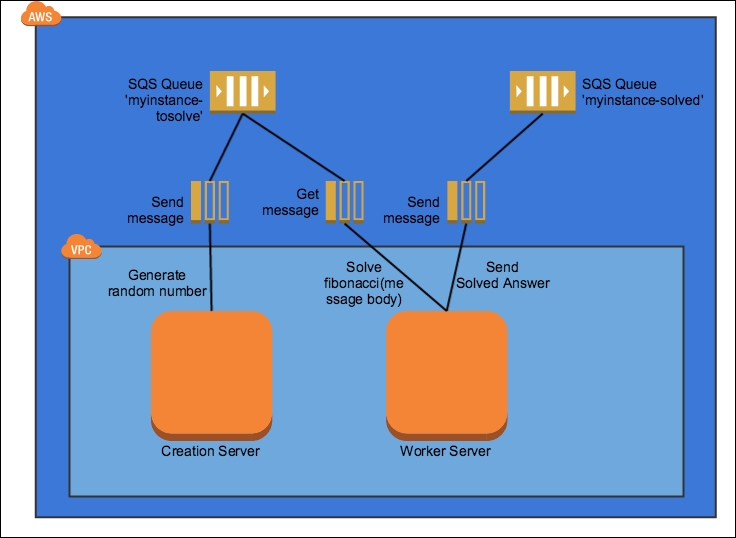Queuing chain pattern
In the queuing chain pattern, we will use a type of publish-subscribe model (pub-sub) with an instance that generates work asynchronously, for another server to pick it up and work with. This is described in the following diagram:

The diagram describes the scenario we will solve, which is solving fibonacci numbers asynchronously. We will spin up a Creator server that will generate random integers, and publish them into an SQS queue myinstance-tosolve. We will then spin up a second instance that continuously attempts to grab a message from the queue myinstance-tosolve, solves the fibonacci sequence of the numbers contained in the message body, and stores that as a new message in the myinstance-solved queue.
Note
Information on the fibonacci algorithm can be found at http://en.wikipedia.org/wiki/Fibonacci_number.
This scenario is very basic as it is the core of the microservices architectural model. In this scenario, we could add as many worker servers as we see fit with...

































































